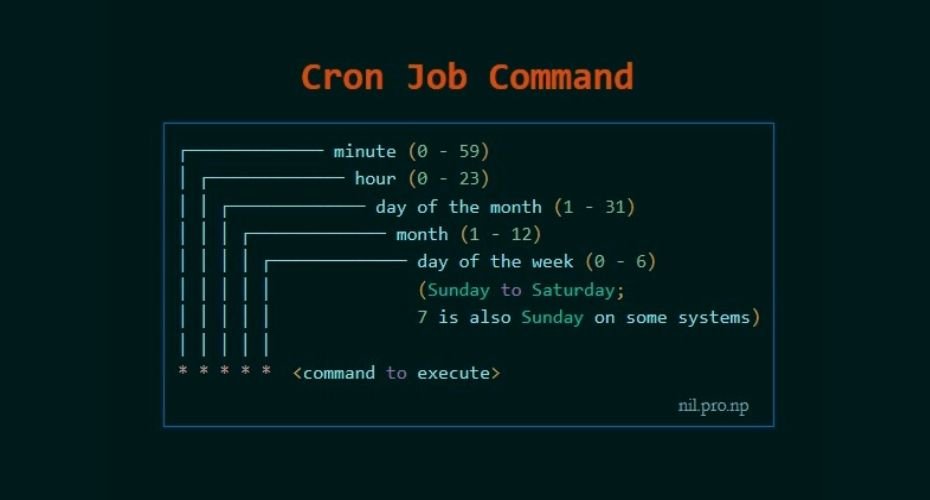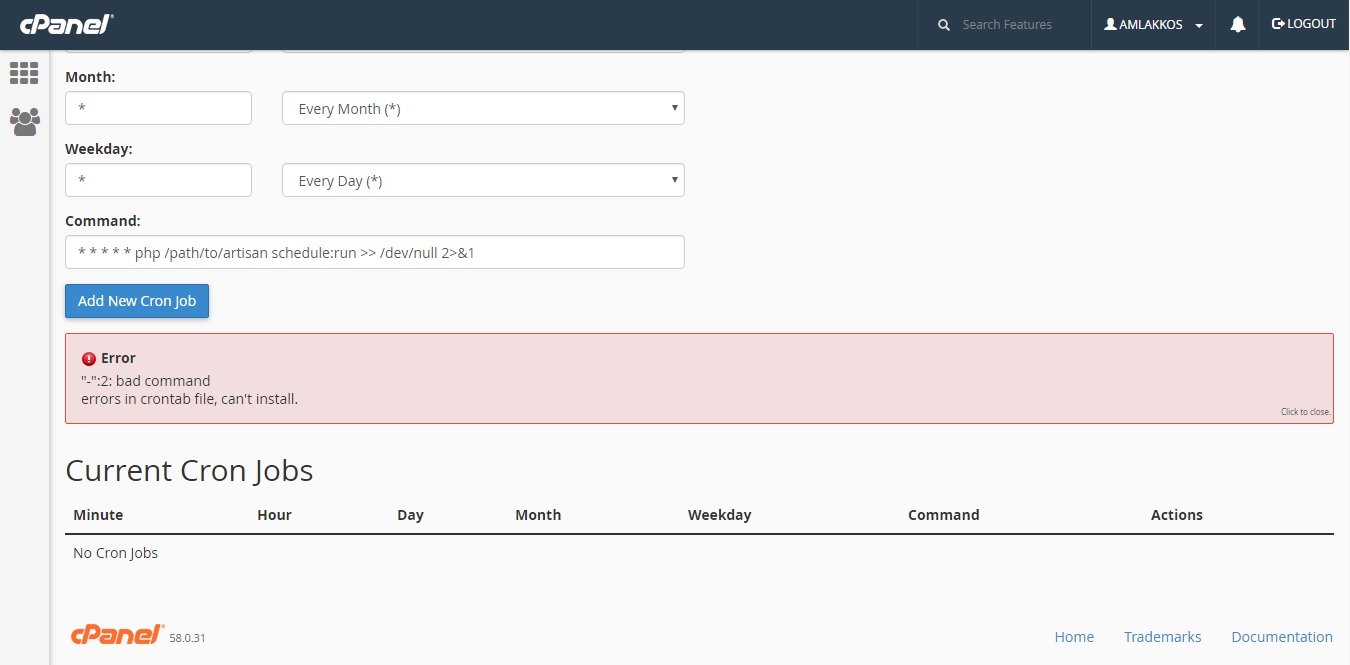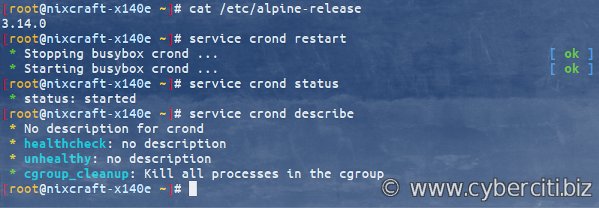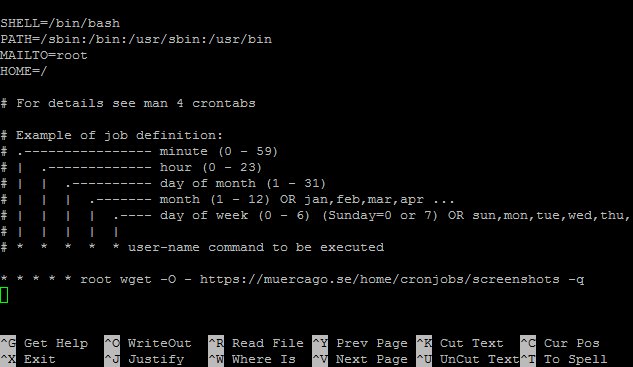Have you ever wanted to automate certain tasks on your computer or server? Look no further! The solution lies in understanding the power of cron job expressions. A cron job expression is a string of characters that represents a specific schedule for executing tasks. By mastering the art of cron job expressions, you can effortlessly schedule and automate various operations, such as running scripts, downloading files, or sending emails. In this article, we will demystify the world of cron job expressions and explore how they can streamline your workflow. So, let’s dive right in and unleash the full potential of cron job expressions!
Cron Job Expression: A Comprehensive Guide to Automating Tasks
Running repetitive tasks manually can be time-consuming and prone to human error. However, with the power of cron job expressions, you can automate these tasks and save valuable time and effort. In this comprehensive guide, we will delve into the intricacies of cron job expressions, exploring their syntax, usage, and common pitfalls. By the end, you will be equipped with the knowledge to harness the full potential of cron job expressions and streamline your workflow.
Understanding Cron Job Basics
Before we dive into the details of cron job expressions, let’s start with the basics. Cron, short for “chronos” in Greek meaning time, is a time-based job scheduler in Unix-like operating systems. It enables users to execute commands or scripts at specified intervals automatically. A cron job, therefore, is the task or command that is scheduled to run periodically.
A cron job is composed of two essential components:
1. Schedule: This determines when the job should run. It consists of five fields that define the time and frequency of execution: minute, hour, day of the month, month, and day of the week.
2. Command: This is the task or script that the system should execute when the schedule triggers.
To interact with the cron system, users typically utilize the `crontab` command, which allows them to create, edit, and manage their cron jobs.
The Syntax of Cron Job Expressions
To specify the schedule for a cron job, you must understand the syntax of cron job expressions. Each field in the expression corresponds to a unit of time, and you can use various symbols and operators to define the desired schedule. Here is the general structure of a cron job expression:
“`
* * * * *
| | | | |
| | | | +– Day of the week (0 – 6) (Sunday = 0 or 7)
| | | +—- Month (1 – 12)
| | +—— Day of the month (1 – 31)
| +——– Hour (0 – 23)
+———- Minute (0 – 59)
“`
Let’s break down each field and explore the available options:
Minute (0 – 59)
This field represents the minute of the hour when the cron job should run. You can specify a single value or a range using numbers from 0 to 59. For example, 5 represents the 5th minute, while 0-15 denotes a range from 0 to 15. To select specific minutes, you can use a comma-separated list, such as 5,15,30.
Hour (0 – 23)
The hour field determines the hour of the day when the cron job will execute. Like the minute field, it accepts single values, ranges, and comma-separated lists. For instance, 2 refers to the 2nd hour, while 8-18 represents a range from 8 AM to 6 PM.
Day of the Month (1 – 31)
This field controls the day of the month for cron job execution. It follows the same pattern as the previous fields, allowing you to specify single values, ranges, or lists. For example, 1 means the 1st day of the month, while 5,15,25 selects specific days.
Month (1 – 12)
The month field determines the month in which the cron job should run. It uses numbers from 1 to 12 to represent each month. Similar to other fields, you can use single values, ranges, or lists. For instance, 3 denotes March, while 1-6 represents a range from January to June.
Day of the Week (0 – 6)
This field specifies the day of the week when the cron job will execute. It follows the same pattern as the previous fields and uses numbers from 0 to 6, where Sunday can be represented as either 0 or 7. For example, 4 refers to Thursday, while 0,6 selects both Sunday and Saturday.
Special Characters and Operators
Cron job expressions also support special characters and operators to provide more flexibility in scheduling. Here are a few crucial ones:
– * (Asterisk): Represents all possible values. For instance, using * in the hour field means the cron job will run every hour.
– / (Slash): Specifies a step value for a range. For example, */15 in the minute field means the cron job will run every 15 minutes.
– , (Comma): Separates multiple values. For instance, 2,5 in the hour field means the cron job will run at the 2nd and 5th hour.
– – (Hyphen): Defines a range of values. For example, 1-5 in the day of the week field means the cron job will run from Monday to Friday.
Examples of Common Cron Job Expressions
To solidify your understanding of cron job expressions, let’s explore some common examples and their corresponding schedules:
1. Run a script every day at 8 PM:
“`
0 20 * * *
“`
2. Execute a command every Monday at 9 AM:
“`
0 9 * * 1
“`
3. Schedule a task to run every 15 minutes:
“`
*/15 * * * *
“`
4. Run a task every first day of the month at 12 PM:
“`
0 12 1 * *
“`
5. Execute a command every weekday at 4:30 PM:
“`
30 16 * * 1-5
“`
Feel free to experiment with different combinations of cron job expressions to suit your specific needs and requirements.
Pitfalls and Considerations
While cron job expressions are incredibly powerful, there are a few pitfalls and considerations to keep in mind when working with them:
1. Timezone: Ensure that the server’s timezone is correctly set to avoid any discrepancies in scheduling.
2. Relative Paths: When executing commands or scripts in cron jobs, use absolute paths or ensure that the working directory is set correctly.
3. Logging: It’s crucial to log the output and error messages of your cron jobs for troubleshooting and monitoring purposes. Specify the appropriate redirection in your cron job command to capture the desired logs.
4. Job Overlaps: Be cautious when scheduling multiple jobs at close intervals, as they might overlap and consume excessive resources. Consider the execution time of each task and adjust the schedules accordingly.
5. Security: Ensure that only trusted users have access to manage cron jobs, as they have the potential to execute commands with system-level privileges.
Cron job expressions are a powerful tool for automating repetitive tasks and streamlining your workflow. By understanding the syntax, scheduling options, and common pitfalls, you can effectively utilize cron job expressions to save time, reduce errors, and improve productivity. Experiment with different expressions and schedules to find the perfect automation solution for your specific needs. Automate away and enjoy the newfound efficiency in your daily operations!
Learn how to write Cron Expression under 5 minutes
Frequently Asked Questions
What is a cron job expression?
A cron job expression is a string of values that specifies the time and frequency at which a cron job should be executed. It consists of five fields representing minute, hour, day of the month, month, and day of the week.
How do I write a cron job expression?
To write a cron job expression, you need to specify the desired values for each field. The fields are represented by asterisks (*) or numerical values. For example, 0 * * * * would execute the cron job every hour.
What are the special characters used in a cron job expression?
In a cron job expression, the asterisk (*) is used as a wildcard to represent all possible values, indicating that the cron job should be executed at every occurrence of that field. Other special characters include hyphen (-) to specify a range of values and comma (,) to separate multiple values.
Can I use a combination of values in a cron job expression?
Yes, you can use a combination of values in a cron job expression. For example, 0 9,12 * * 1-5 would execute the cron job at 9 AM and 12 PM every weekday.
What does the cron job expression “*/5 * * * *” mean?
The cron job expression “*/5 * * * *” means that the cron job should be executed every 5 minutes. The asterisk (*) in each field indicates that it should run at every occurrence of that field.
Can I schedule a cron job to run on specific days of the week?
Yes, you can schedule a cron job to run on specific days of the week by specifying the desired values in the “day of the week” field. For example, 0 0 * * 1,4 would execute the cron job at midnight every Monday and Thursday.
Final Thoughts
In conclusion, the key to effectively managing scheduled tasks in a system lies in understanding the cron job expression. With the correct syntax, one can easily define the frequency and timing of tasks to be executed. By utilizing this powerful tool, users can automate repetitive tasks and ensure optimal system efficiency. Whether it’s running backups, scheduling reports, or performing maintenance tasks, the cron job expression provides a flexible and precise way to manage time-based job scheduling. By mastering this essential element, users can enhance productivity and streamline their workflows effortlessly.




